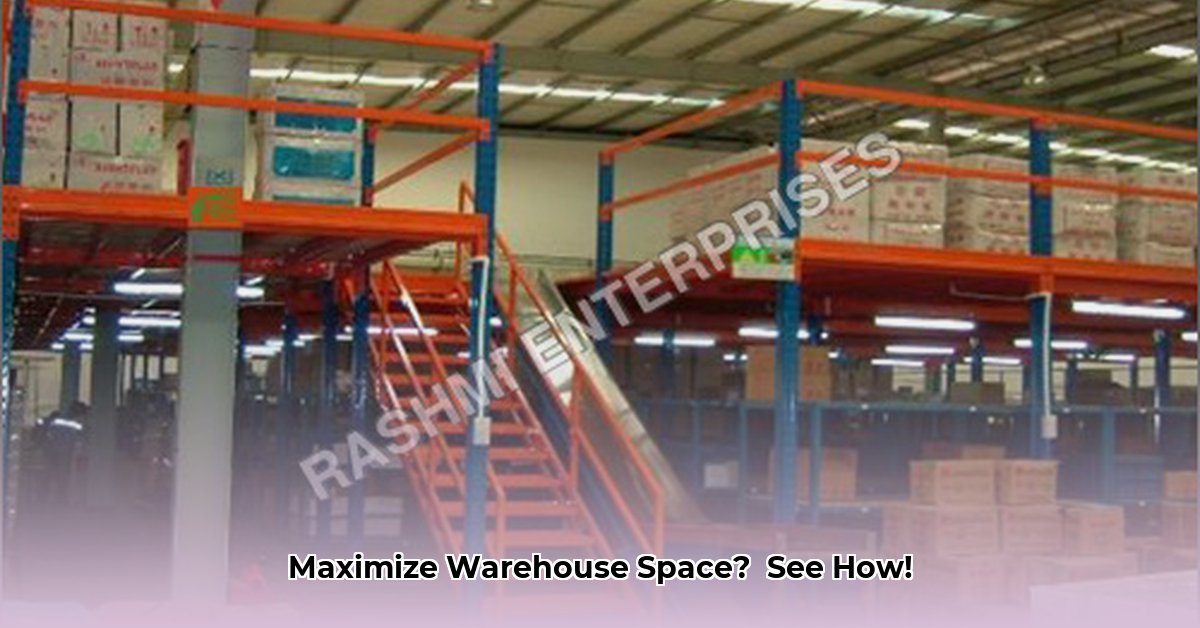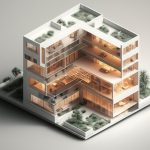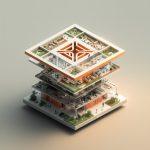Is your warehouse bursting at the seams? Are space constraints impacting productivity and profitability? A mezzanine floor could be the cost-effective solution you need. This comprehensive guide provides an in-depth look at mezzanine floor systems, exploring the benefits, design considerations, and key supplier differences to help you choose the best option for your unique business needs. From boosting storage capacity and optimizing workflow to ensuring regulatory compliance, discover how a mezzanine floor can transform your warehouse and improve your bottom line. For more freestanding options, check out [this resource](https://www.wavesold.com/freestanding-mezzanine-floor).
Unlock Vertical Potential: Mezzanine Floors as a Warehouse Storage Solution
Traditional warehouse expansion methods like building additions or relocating can be incredibly expensive and disruptive. Mezzanine floors offer a smarter approach. By utilizing the often-unused vertical space within your existing structure, you can significantly increase storage capacity without the high costs and complexities of traditional construction. Mezzanine floors essentially create additional levels within your warehouse, providing a flexible and efficient way to optimize space and enhance operational flow.
Supplier Spotlight: KABTech and Wildeck
Selecting the right supplier is crucial for a successful mezzanine floor project. Two leading companies in the industry are KABTech and Wildeck, each with distinct strengths and approaches. Understanding these differences is essential for making an informed decision that aligns with your specific needs and budget.
KABTech specializes in custom-engineered mezzanine solutions designed for optimal space utilization and seamless integration with your existing warehouse environment. They offer a broad range of materials, including steel, concrete, and composite options, allowing for highly tailored designs that accommodate specific load requirements, equipment layouts, and workflow patterns. While their custom approach ensures a perfect fit, it can sometimes result in longer design and installation timelines.
Wildeck, on the other hand, focuses on pre-engineered, modular mezzanine systems that offer a balance of cost-effectiveness, speed of installation, and adaptability. Their systems primarily utilize steel, known for its strength and durability, and their pre-fabricated components allow for rapid assembly and minimal disruption to your operations. Wildeck’s modular design provides flexibility for future adjustments or relocations, making them a popular choice for businesses with evolving needs. However, their design options may be more limited compared to KABTech’s custom solutions.
Here’s a detailed comparison table highlighting the key differences between KABTech and Wildeck:
| Feature | KABTech | Wildeck |
|---|---|---|
| Design Approach | Custom-engineered for optimal space utilization | Pre-engineered, modular systems for fast installation |
| Primary Material | Steel, concrete, composite; offering design flexibility | Primarily Steel; known for its strength and ease of assembly |
| Installation Time | Typically longer, due to custom design and on-site fabrication | Generally faster; often pre-fabricated components |
| Adaptability | Highly adaptable; tailored to specific warehouse layouts | Adaptable; modular components allow for future adjustments or relocation |
| Material Handling Integration | Integrates with existing systems; may require third-party suppliers | Offers integrated Vertical Reciprocating Conveyors (VRCs) for seamless material flow |
Design and Construction Considerations for Structural Integrity
Regardless of your chosen supplier, the design and construction phase is critical for ensuring the safety, stability, and longevity of your mezzanine floor. Both KABTech and Wildeck employ experienced engineers who will work closely with you to determine the optimal layout, size, load capacity, and structural requirements of your mezzanine system. This process involves a thorough assessment of your existing building, including ceiling height, floor load capacity, and existing infrastructure, as well as a detailed understanding of your storage needs and operational workflow.
Construction techniques can vary depending on the design approach. KABTech’s custom designs often involve on-site fabrication and assembly, requiring skilled tradespeople and careful coordination. Wildeck’s pre-engineered components are typically shipped to your warehouse and assembled on-site, minimizing disruption and reducing construction time. The best approach depends on your specific project requirements, budget, and timeline.
Optimizing Workflow: Integrating Material Handling Systems
Efficient material handling is crucial for maximizing the benefits of your mezzanine floor. Seamlessly moving goods to and from the new level is essential for maintaining productivity and minimizing bottlenecks. Wildeck offers a significant advantage in this area with its integrated Vertical Reciprocating Conveyors (VRCs), providing a safe, efficient, and code-compliant solution for vertical material transport. KABTech often works with third-party suppliers to integrate your mezzanine with existing material handling systems such as forklifts, conveyor belts, and pallet lifts. The ideal solution depends on your existing infrastructure, budget, and desired level of integration.
Understanding Costs and ROI
The cost of a mezzanine floor system varies widely depending on factors such as size, materials, design complexity, and integration requirements. While it’s difficult to provide precise cost estimates without a detailed project assessment, both KABTech and Wildeck can offer competitive pricing and a strong return on investment by creating additional storage space, improving operational efficiency, and reducing long-term operational costs. Consider the potential tax benefits and depreciation allowances associated with capital improvements when calculating your ROI. A thorough cost-benefit analysis, conducted in consultation with a financial professional, is highly recommended.
Minimizing Risks and Ensuring Regulatory Compliance
Like any construction project, mezzanine floor installation involves potential risks, including structural issues, accidents during installation, and material handling hazards. These risks can be effectively mitigated through careful pre-planning, the selection of experienced and reputable contractors, and strict adherence to safety protocols and regulatory compliance. Choose a supplier with a proven safety record and a comprehensive understanding of building codes, including OSHA standards and local regulations. Regular inspections after installation are essential for maintaining structural integrity and ensuring ongoing safety.
Planning for Future Growth and Adaptability
A mezzanine floor is a significant investment with long-term implications. When planning your project, it’s essential to consider your future needs and growth projections. Choose a system that can adapt to changing operational requirements, accommodate future expansion, and seamlessly integrate with evolving technologies. A well-planned and well-built mezzanine floor can add value and versatility to your warehouse for many years to come, providing a foundation for sustainable growth.
Making the Right Choice: Selecting a Warehouse Mezzanine System
The decision between KABTech and Wildeck, or other suppliers, depends heavily on your individual circumstances, budget, and long-term objectives. This section provides a practical framework for making an informed choice that aligns with your specific needs and maximizes the value of your investment.
Define Your Needs and Priorities
Before contacting potential vendors, take the time to clearly define your warehouse’s unique requirements. Consider the following factors:
- Budget: Establish a realistic budget that includes design, materials, installation, and any necessary permits or inspections.
- Load Capacity: Determine the maximum load capacity required for your mezzanine floor, taking into account the weight of stored materials, equipment, and personnel.
- Space Requirements: Calculate the amount of additional floor space you need to gain from the mezzanine.
- Timeline: Establish a realistic timeline for the design, fabrication, and installation of your mezzanine floor.
- Operational Requirements: Consider how the mezzanine will integrate with your existing workflow, material handling systems, and storage processes.
Key Stakeholders: Involve the Right People in the Decision-Making Process
- Warehouse Managers: Focus on ROI, installation timelines, and minimal operational disruption. Request detailed proposals including cost breakdowns and completion schedules from both vendors.
- Engineers: Analyze structural integrity, load-bearing capacity, and compliance with building codes. Compare design specifications and material choices thoroughly.
- Finance Teams: Carefully review cost estimates, assessing long-term return on investment. Factor in potential tax incentives associated with warehouse improvements.
Risk Mitigation and Regulatory Compliance Standards
Prioritize safety throughout the entire process, from design to installation. Thoroughly review the installation plans, ensuring they meet all applicable building codes (like OSHA and IBC). Regular inspections are crucial for maintaining structural integrity and preventing accidents. Plan for potential disruptions during installation. Carefully consider the risk of structural failure, especially with heavy loads.
Key Takeaways:
- Assess Your Needs: Accurately define your budget, load requirements, space needs, and timeline.
- Compare Vendors: KABTech and Wildeck both offer valuable solutions. KABTech excels in custom designs, while Wildeck’s pre-engineered systems typically offer faster installation.
- Consider Stakeholders: Involve all relevant stakeholders – managers, engineers, and finance teams – in the decision-making process.
- Glass Mosaic Backsplash: A Stylish Upgrade For Your Kitchen - December 8, 2025
- Glass Tile Shower Ideas to Create a Stunning Bathroom Space - December 7, 2025
- Glass Wall Tile Ideas for Kitchens and Bathrooms - December 6, 2025










